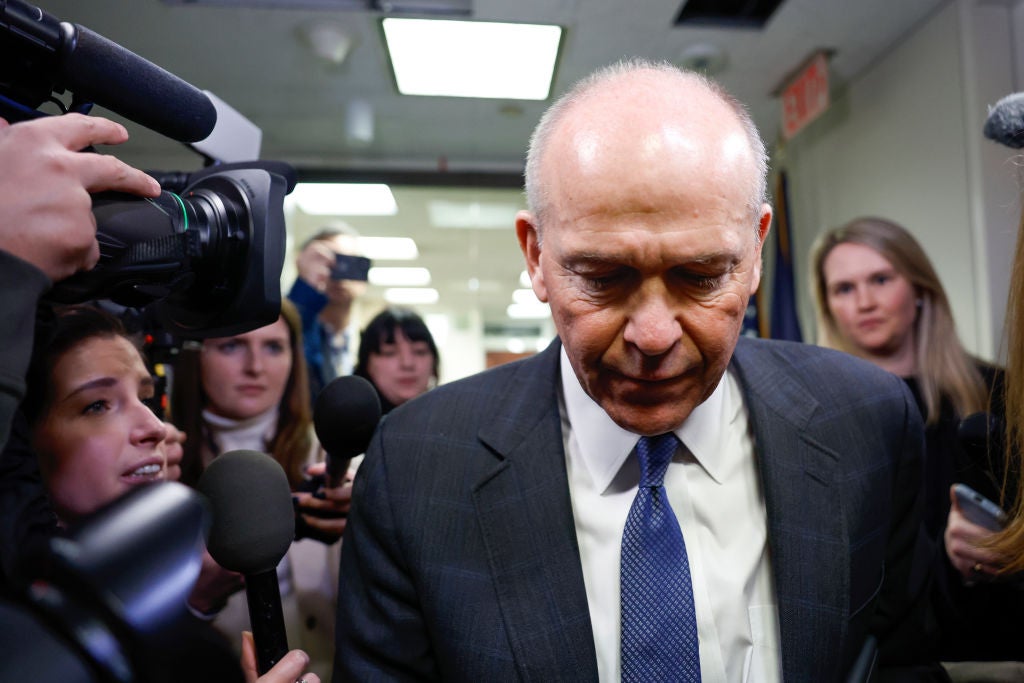
US aerospace giant Boeing has been beset by numerous high-profile incidents over recent years, ranging in severity from the frightening to the fatal and resulting in a loss of confidence in and orders for the company.
Poor management, outsourcing, and the prioritisation of “bean counting” have all been given as reasons for the company’s floundering, but a (multi-)billion dollar question remains: would the US actually ever allow Boeing to fail?
A catalogue of disasters
With a revenue of over $77bn in 2023, Boeing is one of the largest manufacturers in the US from any industry. It employs over 170,000 people globally, the majority in its domestic US market where its three largest production facilities are based (Everett, Renton, and Charleston).
For Steven Blitz, chief US economist at TS Lombard, these headline figures – what Boeing does for the US – make it simply “too important to fail.”
However, today, Boeing is flying in the shadow of its own failings, with a catalogue of errors almost too long to list.
Last month, a Boeing 737-800 lost an external panel during flight. A few days earlier, a Chilean LATAM Airlines Boeing 787 Dreamliner experienced a sudden drop that saw 50 injured.
Rewind a few weeks further to January and there was the now infamous incident in which a door plug was blown out of an Alaska Airlines Boeing 737 Max 9 aircraft as it was climbing after takeoff. One passenger’s shirt was torn off as the cabin depressurised at 4,200m (14,000 feet), and the door itself was later located in the garden of a teacher in Oregon.
These incidents alone have been disconcerting, but two fatal crashes in 2018 and 2019 make up the darkest chapter in Boeing’s history. The deaths of 189 people in Indonesia in October 2018 and 157 in Ethiopia in March 2019 saw the Boeing 737 Max grounded globally for a total of 20 months.
An investigation established that the automated flight software was to blame, and improvements saw the planes cleared to fly again, but 2019 marked the first year that Boeing made a loss in two decades, and the company has struggled to reclaim its top spot in the duopoly with Airbus ever since.
Andrew Charlton, CEO of Aviation Advocacy, believes that Boeing’s personnel need to be held responsible for the failings. He points specifically to Dave Calhoun, the company’s soon-to-retire CEO and “the bean counters” who moved the 787’s production to South Carolina in 2011.
“They have to acknowledge it and do more than say: ‘Gosh, people dying on aeroplanes is not a good sign’. They have to actually say: ‘There's only one way we're going to fix that, and that is bottom-up; we're going to get in there and fix every process’.”
Piloted by bean counters
Boeing’s decision to move to South Carolina was widely accepted to have been because the state is the least unionised in the US. Charlton argues that this enabled Boeing to bring in a new, cheaper workforce and to reduce focus on engineering quality.
“They had less strict labour laws and consequently [Boeing] brought in employees who last week were flipping hamburgers, and this week are making aeroplanes,” he says, referencing the accusations of whistleblower John Barnett.
Barnett, a quality manager at Boeing who had been at the company for over 30 years, died from an apparent suicide in March having been giving evidence in a lawsuit against the company. Among his assertions was that up to 25% of oxygen systems could be faulty and that faulty parts were used to speed up production times.
Boeing's move to South Carolina was coupled with another financially-motivated miscalculation: the decision to outsource much of the production for the 787. The plan was intended to reduce development time from six years to four and costs from $10bn to $6bn. Instead, it made quality control a Wild West.
The Boeing 787 production now had a supply chain structure consisting of around 50 tier-one partners with around 30% outsourced to manufacturers outside the US. It was responsible for the 2.3 million parts needed but was spread out across partners in Italy, France, Britain, and Japan, all of which had their own supply chains.

“Historically, the engineers would have sent all of their quality control personnel to each of these outsourced suppliers to make sure the quality was up but obviously that's an expense, so the bean counters cut that rubbish out,” says Charlton.
He points out that by looking to “break the unions, lower [their] costs, and outsource everything”, Boeing omitted consideration of the most important part of aircraft construction: that “assembly depends on really fantastic suppliers, and really fantastic suppliers need really great staff.”
The shift away from engineering excellence took the company in the wrong direction, but Abhijit Apsingikar, senior defence analyst at GlobalData, believes the company has repeatedly refused to make the changes necessary to redirect its trajectory.
“Boeing’s top management was reported to have ignored persistent indicative warning signs since the 737 Max fiasco, which significantly damaged the reputation of the manufacturer,” Apsingikar tells Airport Technology. “If Boeing had taken corrective measures back in 2019 itself, after the unfortunate Lion Air Flight 610 and Ethiopian Airlines Flight 302 crashes, which resulted in the grounding of the 737 Max fleet, it could have prevented the Alaska Airlines Flight 1282 incident in January 2024 [the door panel incident].”
Poor management has seen Boeing drop from its heady heights, and Charlton thinks that the swift overturn of the company’s current administration is a point of urgency. “My suggestion would be mass clear out, quickly,” he contends.
Charlton particularly wants to see the back of Calhoun, a General Electric alumnus, arguing: “The current CEO of Boeing is retiring, but it's at the end of the year. I think they've got to say: ‘Here is a lot of money so when you land there will be quite a fat mattress underneath you, but please go away very rapidly’.
“I think the worst thing you can do is make these changes whilst keeping the old regime in place until the new regime comes along.”
Can Boeing get back on course?
Despite Boeing’s turbulent trajectory of late, the company has proved more robust than some of its aircraft, and it could weather the storm. Considering the company’s many problems, Charlton points out that nothing lasts forever.
“A number of things may happen. First, Airbus, racing to fill orders, falls foul of the same errors of misplaced focus that hit Boeing, by which point Boeing, having cleaned the stables, can re-establish itself," he says.
“Secondly, the backlog works as a brake on innovation. Airbus will be so focused on building and selling the current models, that maybe Boeing will come up with the next great aeroplane. That will take a major shift in Boeing management but that is all the industry is praying for at the moment.”
Indeed, Airbus is facing a huge backlog of orders, with estimates suggesting that fulfilment will take the remainder of the decade. According to GlobalData figures, Airbus aircraft orders stood at 2,319 in 2023 compared to Boeing’s 1,456.
Yet 1,456 orders is not an insignificant number and the company still has business. In a duopoly where one company is struggling to meet demand, the other automatically finds a market. Coupled with a guaranteed income and an industry-supporting business across the North American supply chain, it looks likely the manufacturer is likely to stay afloat.
The US dollar will make sure that Boeing survives.
Blitz concurs, pointing out that a backlog of any size offers a cash flow that can be used as collateral. However, he posits that, if things did go undercarriage-up, “the US dollar will make sure that Boeing survives because it is a major source of economic growth for the nation.”
In this instance though, the company might find itself subject to some wing clipping – a bailout would have to benefit America.
“Would we give low-cost loans to Boeing if need be, because the interest rate would be too high for them to justify? The short answer to that question is yes, but it wouldn't be a blank check,” says Blitz. “Both Biden and Trump are both similarly focused on providing domestic jobs. If this is leverage that can be used to do that, they will use it. It’s not a question of just throwing money at them.”
Is Boeing too big to fail? In Charlton’s words: “The American economy probably thinks so, the airline industry most certainly thinks so.”



